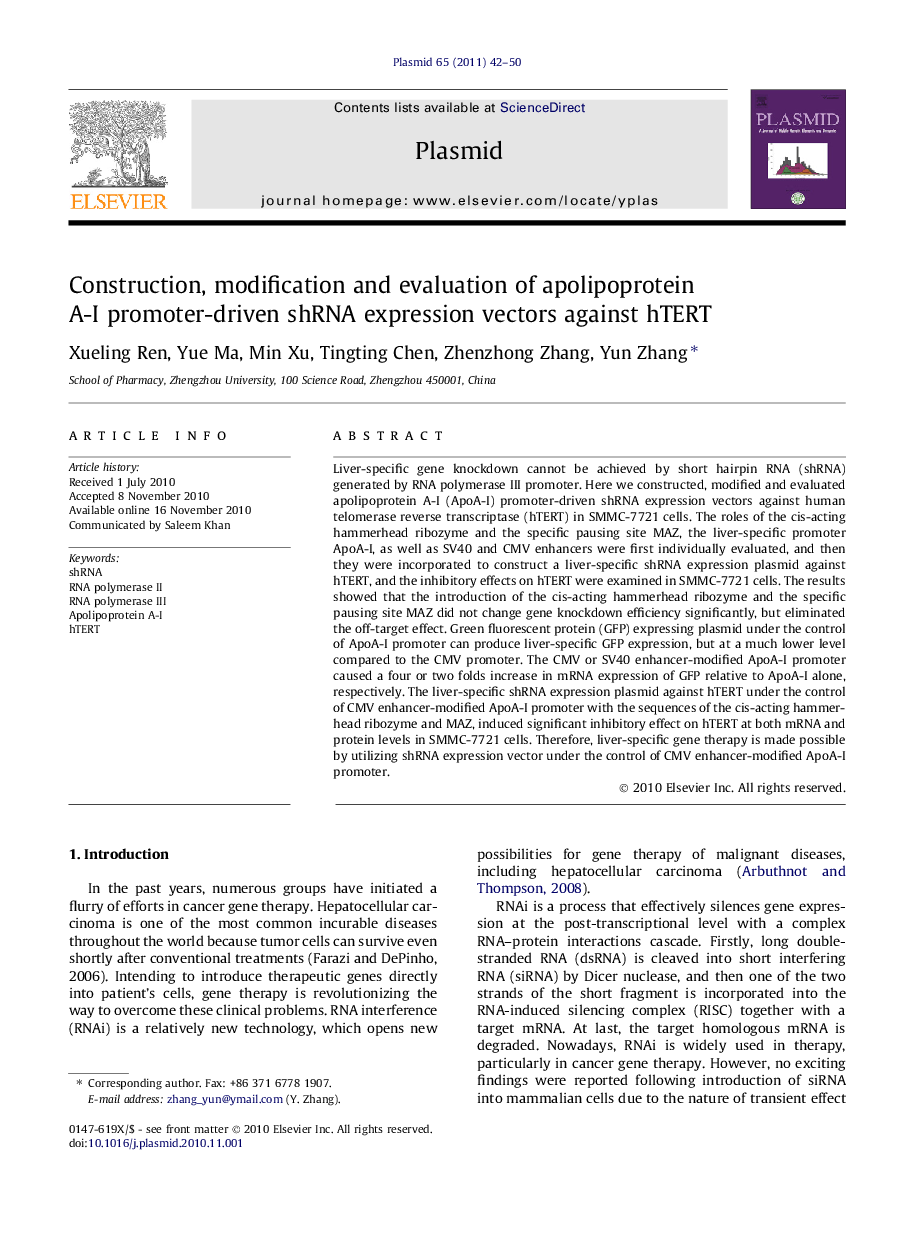| Article ID | Journal | Published Year | Pages | File Type |
|---|---|---|---|---|
| 2824362 | Plasmid | 2011 | 9 Pages |
Abstract
Liver-specific gene knockdown cannot be achieved by short hairpin RNA (shRNA) generated by RNA polymerase III promoter. Here we constructed, modified and evaluated apolipoprotein A-I (ApoA-I) promoter-driven shRNA expression vectors against human telomerase reverse transcriptase (hTERT) in SMMC-7721 cells. The roles of the cis-acting hammerhead ribozyme and the specific pausing site MAZ, the liver-specific promoter ApoA-I, as well as SV40 and CMV enhancers were first individually evaluated, and then they were incorporated to construct a liver-specific shRNA expression plasmid against hTERT, and the inhibitory effects on hTERT were examined in SMMC-7721 cells. The results showed that the introduction of the cis-acting hammerhead ribozyme and the specific pausing site MAZ did not change gene knockdown efficiency significantly, but eliminated the off-target effect. Green fluorescent protein (GFP) expressing plasmid under the control of ApoA-I promoter can produce liver-specific GFP expression, but at a much lower level compared to the CMV promoter. The CMV or SV40 enhancer-modified ApoA-I promoter caused a four or two folds increase in mRNA expression of GFP relative to ApoA-I alone, respectively. The liver-specific shRNA expression plasmid against hTERT under the control of CMV enhancer-modified ApoA-I promoter with the sequences of the cis-acting hammerhead ribozyme and MAZ, induced significant inhibitory effect on hTERT at both mRNA and protein levels in SMMC-7721 cells. Therefore, liver-specific gene therapy is made possible by utilizing shRNA expression vector under the control of CMV enhancer-modified ApoA-I promoter.
Related Topics
Life Sciences
Biochemistry, Genetics and Molecular Biology
Genetics
Authors
Xueling Ren, Yue Ma, Min Xu, Tingting Chen, Zhenzhong Zhang, Yun Zhang,
